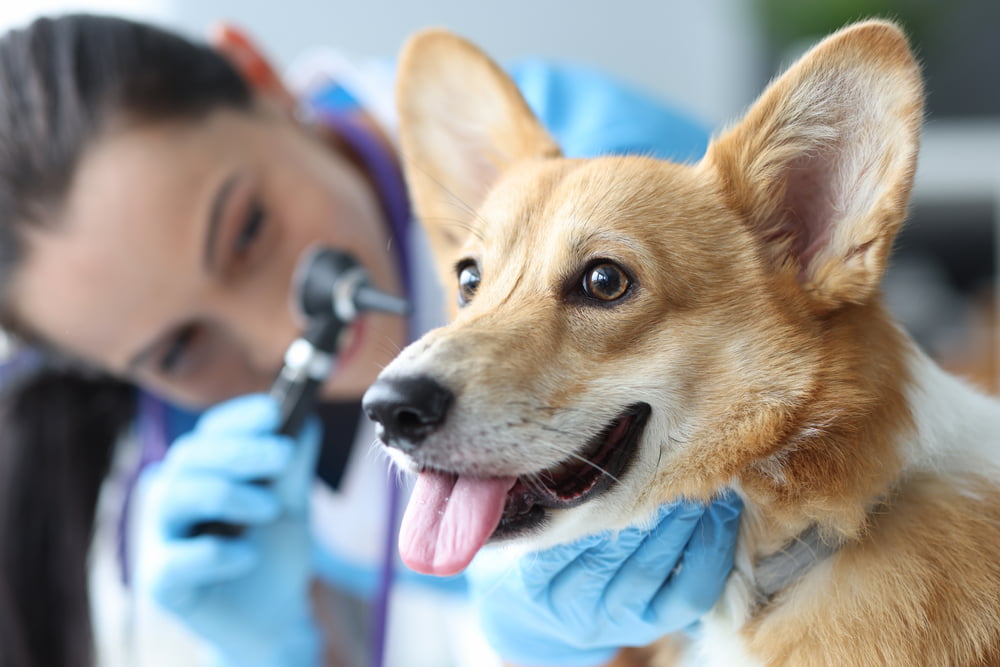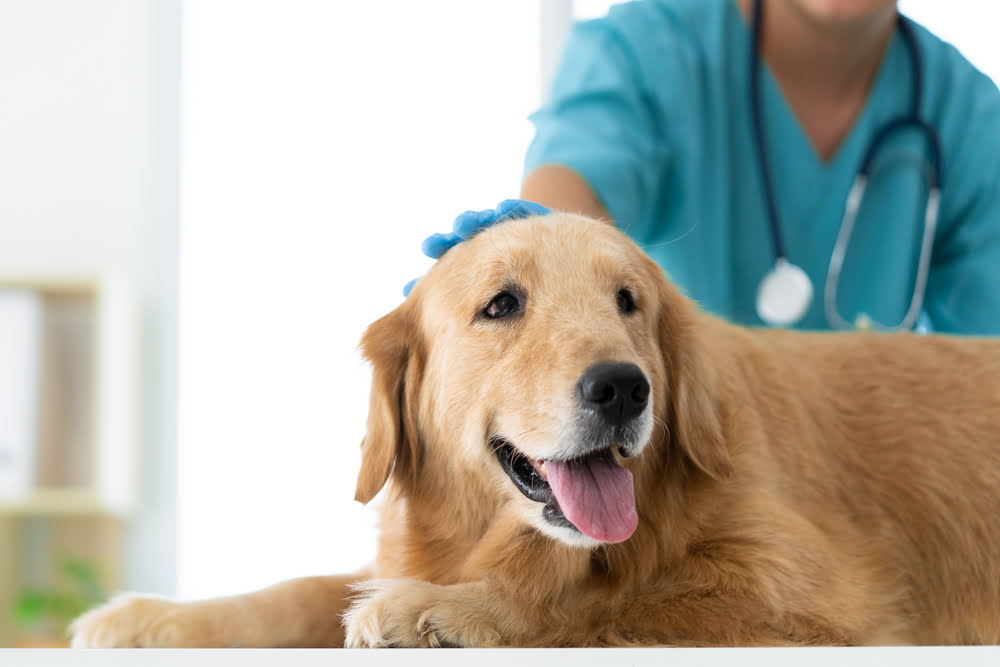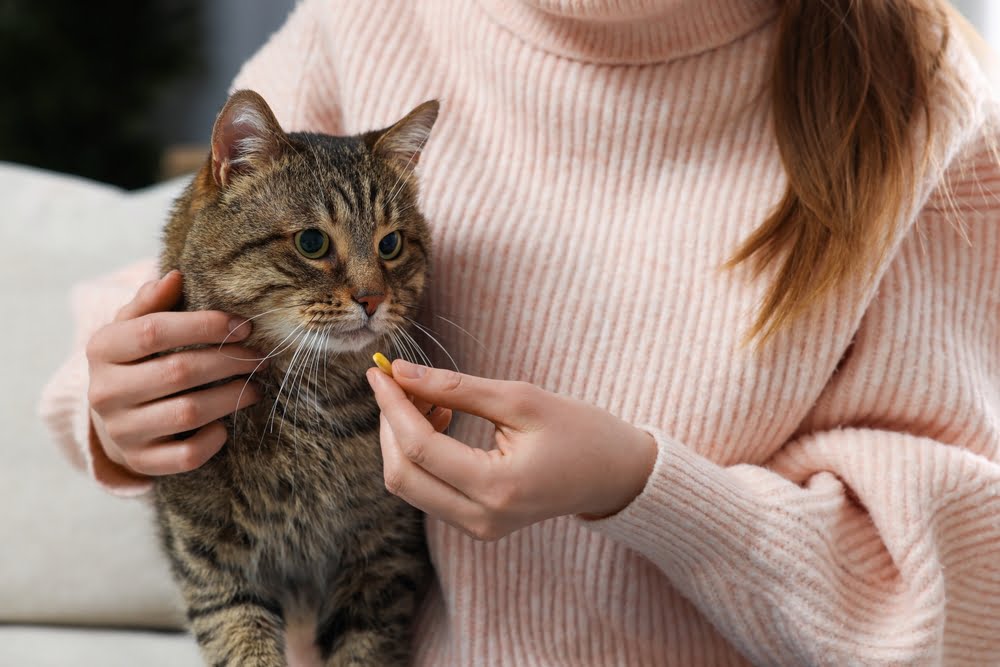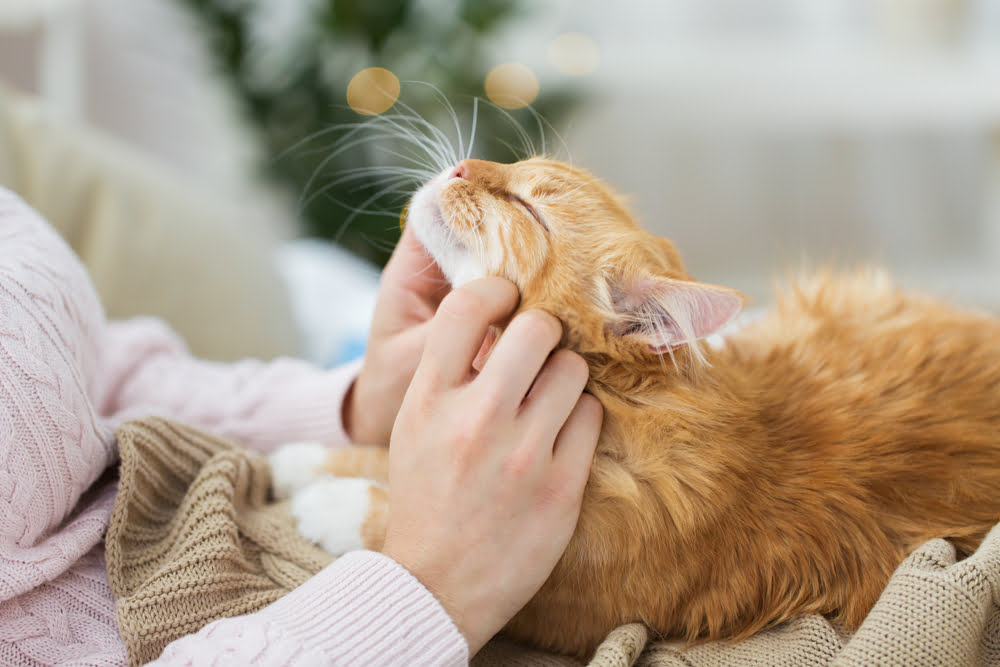
Veterinary Surgery In St. Peters, MO

Veterinary Surgery in St. Peters, MO: Understanding the anxiety that comes with considering surgery for your pet is something we empathize deeply with. Many of our amazing team members have navigated these challenging waters alongside their own cherished companions.
For nearly half a century, Harvester Animal Clinic has been a cornerstone of compassionate pet care in St. Peters, MO. On our website, you’ll find comprehensive information about the wide range of veterinary surgery services we offer to ensure your pet receives excellent care.
Place your trust in us to provide both expertise and emotional support—together, let’s take the next step towards your pet’s health and well-being!
Our Advanced Veterinary Surgical Services
ACL/CCL Surgery
At our vet office, we understand how vital your pet’s ability to move and enjoy life is, which is why specialized ACL/CCL veterinary surgery is among the top services provided. This veterinary surgery procedure fixes torn ligaments in the knee—a frequent issue for pets that leads to pain and difficulty walking.
Our experienced surgeons work meticulously to mend your pet’s leg, giving it back its strength so it can once again leap and play with joy.
The cranial cruciate ligament (CCL), also known as anterior cruciate ligament (ACL) in humans, is found in the knee. When this ligament is torn, an abnormal shearing force occurs causing pain and arthritis over time. The lateral suture surgical technique places a false ligament on the outside of the joint to stabilize the knee allowing return of function and slowing the progression of arthritis. Pets must have strict rest post-op to allow scar tissue to form. Crate rest is the only way to ensure pets will lie still and rest.
A crate is required, and the pet must stay in the crate, other than to go to the bathroom, for the first 2 weeks. It is up to you to keep your pet calm and under control. It is the pushing off / accelerating forward/ jumping motion that can cause your pet to damage the repair. Even after the crate rest period, no exercise should be allowed for 6 weeks. Pets must stay on a short leash when outside and under control at all times to prevent above mentioned movements. Crate rest should be used for a longer period if your pet will not behave calmly out of the crate after the first 2 weeks.
Amputations (leg, tail, toe)
Pets are part of the family, and we know that the thought of them needing surgery, especially amputations, can be tough. Our dedicated crew makes sure to deliver top-level care during leg, tail, or toe amputations so our four-legged patients can bounce back better than ever.
No matter if it’s an injury or disease that brings them in, we’re committed to offering a careful and kind surgical experience.
The most common reasons for amputations include growths, trauma, and dislocation. Pets are not vain and do not care how they look as long as they continue to receive love. Pets do very well with only 3 legs.
The most common reasons for tail amputations include growths, trauma, and malformations.
The most common reasons for toe amputations include growths and trauma.
Orthopedic Surgery
Understanding the difficulties that orthopedic problems present for pets is at the core of our clinic’s mission. Our experienced veterinarians carry out orthopedic surgeries with meticulous attention and compassion, focusing on resolving issues with your pet’s bones, joints, and muscles effectively.
They tackle fractures, hip dysplasia, and other bone-related conditions that need surgical intervention to enhance mobility and improve your pet’s overall well-being.
Cherry Eye Removal
Animals have 3 eyelids. The same two lids (upper and lower) that we have, and a third that crosses from the nose side. This third eyelid contains a gland that produces tears to keep the eye moist. When this gland becomes inflamed, it swells and has the appearance of a cherry sitting in the corner of the eye. The inflammation is usually caused by infection or irritation from hair, dust, etc.
It is important to keep the hair trimmed around the eyes to help decrease irritation. To remove a cherry eye, we remove a portion of the gland so that enough gland is preserved to still make tears but not enough to swell outside of the pocket it normally resides in. It is extremely rare for dry eye to occur after a cherry eye repair, but if it occurs, moisturizing drops will be needed long term.
Cherry eye removal is a common surgery to fix prolapsed gland of the third eyelid in dogs. Veterinarians carefully reposition and secure the affected gland during the procedure to improve eye health and reduce discomfort for pets.
Our experienced staff use advanced techniques and modern equipment to perform this delicate procedure with precision, ensuring the best possible outcome for your furry friend.
Dental Cleaning
A dental cleaning visit will include a thorough dental examination, teeth cleaning, and polishing to remove the tartar and periodontal disease-causing plaque. This is done while your dog is under general anesthesia. Once anesthetized, your veterinarian with the help of veterinary assistants will thoroughly examine the mouth, noting abnormalities in the medical record. A dental probe will be used to evaluate gum bleeding and periodontal pockets where food can accumulate and decay if not properly cared for.When periodontal disease is advanced, it may not be possible to save the badly affected teeth, which may need to be extracted either during the procedure or at a later time.
Dewclaw Removal
Dewclaws are residual thumbs. The dewclaw nails do not make contact with the ground and tend to grow around and back into the paw if they are not kept trimmed. They can be found on either the front or rear paws, attached by bone or loosely hanging. Not all dogs have dewclaws. They are most often removed due to nail entrapment, infection, or if owners are unable to keep the nails trimmed.
The extra toes on a dog’s inner paw and can present injury risks if not looked after. Removing these unnecessary appendages can prevent painful injuries or infections.
Entropion Correction
Entropion is a rolling in of the eyelids leading the lashes to rub on the eyeball. This can cause minor irritation up to severe corneal ulcerations. The number of affected lids depends on your pet’s anatomy. A minor nip-tuck of the eyelid will allow the lid to unroll and relieve the irritation to the eye.
It is best to slightly overcorrect the lid so that any future irritation will not allow the lid to roll back in. You may see a bit of pink in your pet’s eye once the lids are corrected. This is simply the conjunctiva around your pet’s eye. Sometimes visibility of the pink area will subside as the swelling goes down, other times you may continue to see the pink area. This is cosmetic only and will not negatively affect your pet.
Entropion correction involves surgically addressing the inward rolling of a pet’s eyelids. Experienced veterinary surgeons use advanced techniques to reposition the eyelids, alleviating discomfort and preventing potential eye damage.
This corrective procedure is crucial for improving your pet’s quality of life and maintaining their ocular health. With high-quality care and state-of-the-art facilities, we ensure that your pet receives comprehensive pre-surgical assessment, top-notch surgical intervention, and attentive post-operative care.
Growth Removal
Growths can appear anywhere on your pet’s body and can grow from many different cell types. Some are slow growing and some can grow quite quickly. Either way, any abnormal lump or bump should be checked by your veterinarian. A needle biopsy (a very small sample taken with a needle) can help determine the type of growth and if removal is indicated.
If a larger sample is needed, or you simply want the growth removed, we can remove the growth and send the entire piece of tissue to the lab to review. If the cell type is unknown prior to surgery or if the growth is suspicious for cancer, we will make every effort to achieve clean margins of skin around the growth. Therefore the incision will appear larger than the actual growth was.
There are some areas of the body where the skin will not allow for clean margins and only a debulking of the mass can be achieved. Drainage tubes and bandages may be used post- op depending on the location and size of the growth. Instructions for care will be sent home with you. Please keep in mind that growth removal pricing is based on the size of the incision necessary to remove the growth and hopefully achieve “clean margins,” not on the size of the growth itself. There are some areas of the body where the skin will not allow for clean margins and only a debulking of the mass can be achieved.
If the growth was deemed benign prior to surgery, removing this extra margin of skin will not be necessary. If your veterinarian has not determined this, we will attempt to achieve “clean margins” meaning we will attempt to get as much as the mass off with as much visually healthy tissue as possible so if it is something scary like cancer, we get as much of it as possible.
Our experienced veterinary surgeons identify and safely remove various types of growths to ensure your pet’s well-being. Whether it’s a benign cyst or a potentially problematic tumor, we offer comprehensive pre-surgical assessment and monitoring to tailor the best approach for your pet’s specific needs.


Enucleation
Enucleation is removal of the eyeball. There are many reasons that the eyeball needs removal. Trauma, glaucoma, and cancer are the 3 most common reasons. When the eye is removed, the lids are closed and sealed. Hair will regrow over the area and the skin will usually lie flat. Pets compensate well with only one eye.
Performing growth removal is just one aspect of our expertise. Our skilled veterinary surgeons have extensive experience in conducting enucleation, a delicate surgical procedure involving the extraction of an animal’s eye.
We prioritize precise pre-surgical evaluation and attentive monitoring during the operation to ensure your pet’s comfort and successful outcomes.
Perineal Urethrostomy (PU)
A PU is the medical term, in cats, for shortening and widening the penis to make a larger opening for your cat to be able to urinate through to help decrease the chance of repeat urinary blockages. Medical management and working closely with your veterinarian after surgery is imperative
PU creates a wider urinary opening in male cats to reduce the risk of recurrent urinary blockages. This option is for cats unresponsive to medical management or with repeated urethral obstructions.
After PU surgery, close monitoring ensures proper healing and helps prevent post-operative complications.
Pyometra Treatment
Pyometra is a life threatening infection of the uterus. If left untreated, the uterus can rupture and your pet will die. Early spaying is recommended to prevent this life threatening condition. Pyometra most commonly occurs in an unspayed pet within a few weeks of your pet being in heat.
We have extensive experience in treating pyometra, a critical condition that demands immediate care. Our skilled surgeons perform rapid and thorough surgical procedures to remove the infected uterus, using advanced techniques and top-notch equipment.
This ensures the successful management of pyometra and safeguards your pet’s health and well-being.
Spay & Neuter
Spay is the term used for removal of the uterus and ovaries. This procedure is usually recommended for young pets as a preventative measure, not only to prevent pet overpopulation, but for many medical reasons as well.
Pyometra (infected uterus, a life threatening condition), uterine and ovarian cancer, prolapsed uterus or vagina, dystocia (puppies trapped in the birth canal requiring emergency c- section), and breast cancer (85% higher incident in unspayed females). This list contains the most common medical concerns in unspayed females that we see on a daily basis.
Neuter is the term used for removing the testicles in a male pet. The scrotal sac is retained and will usually shrink on its own over time. If you would like to have the scrotal sac removed, please discuss prior to scheduling with us, the fee for a scrotal ablation is posted above. This procedure is recommended for young pets as a preventative measure, not only to prevent pet overpopulation, but for many behavioral and medical reasons as well.
Retained testicles, testicular cancer, testicular torsion, prostate cancer, benign prostatic hyperplasia, perineal hernias (due to straining from an enlarged prostate), and increased incidence of UTIs and urinary bladder stone formation. This list contains the most common medical concerns in unneutered males that we see on a daily basis.
Cryptorchid means a retained testicle that has not fallen into the scrotal sac. When this occurs, it is found either in the inguinal region or in the abdomen. No matter where the testicles are found, they are both removed when your pet is neutered.
Splenectomy
Splenectomy is removal of the spleen. The spleen is an abdominal organ involved in the production and removal of blood cells and forms part of the immune system. Other organs take over these functions if the spleen is removed. The most common reasons we remove spleens are due to trauma (splenic rupture), cancer, and splenic torsion (twisting of the spleen cutting off blood supply). Some patients may require blood transfusions before, during or even after a splenectomy.
Performing splenectomies for pets with serious conditions affecting the spleen is a vital service. This surgical procedure involves removing the spleen to address conditions such as tumors, trauma, or hematomas.
The goal is to improve your pet’s quality of life and alleviate any pain or complications associated with spleen-related issues.
Stomach Tacking
Stomach tacking is a preventative surgery to reduce the chance of bloat. Bloat is a surgical emergency to untwist the stomach that has been distended with gas and fluid. It occurs when a deep chested dog’s stomach fills with fluid or food and then twists and begins to distend with gas. When the stomach twists, it pulls the spleen along with it and can cause shock and then death. When the stomach is tacked preventatively, it will be unable to twist, therefore reduce the chance of the life threatening emergency known as bloat.
Veterinary surgeons with ample experience perform stomach tacking procedures to prevent life-threatening conditions like gastric dilatation-volvulus, commonly known as bloat. They use sutures or gastropexy to secure the stomach to the body wall, reducing the risk of twisting and bloating in large, deep-chested breeds.
Stomach tacking is a proactive measure that can be done during spaying or as a standalone procedure to safeguard your pet’s well-being and longevity.
Valvuloplasty
Excessive skin folds around the vagina can lead to chronic skin irritation and urinary tract infections. Removing this excess skin through surgery allows air to circulate and keeps debris from getting trapped between skin folds. This makes for a much happier and more comfortable pet.
Valvuloplasty is a surgical procedure performed on female animals to correct conformational defects or reduce urinary incontinence related to the vulva. The surgery involves repositioning the vulvar lips to improve hygiene and minimize infections, which can be particularly beneficial for pets suffering from chronic urinary tract issues.
During valvuloplasty, excess tissue is removed and the remaining skin is sutured in a way that reduces the risk of urine pooling around the area. This surgical intervention aims to alleviate discomfort and prevent recurrent infections associated with conditions such as recessed or enlarged vulvas.
Wound/laceration Treatment
Repair Wounds have many causes, sizes, and locations. They are usually treated by cleaning, debriding (removal of damaged tissue), and closing/suturing the wound. A drain may be placed in a wound if there is concern for fluid build-up under the skin. Instructions for care will be sent home with you.
At our animal clinic, our veterinary surgeons provide comprehensive treatment for wounds and lacerations in pets. We clean, assess, and treat wounds to ensure proper healing and prevent infection using advanced techniques and medications.
Our surgical services include thorough treatments for lacerations. Our skilled veterinarians carefully examine lacerations and perform appropriate procedures to promote optimal healing with a focus on personalized care tailored specifically to your pet’s needs.
Why Choose Us for Veterinary Surgery?
Experienced and Skilled Veterinary Surgeons
Our team of experienced and skilled veterinary surgeons at Harvester Animal Clinic is dedicated to providing exceptional veterinary surgery care for your beloved pets. With years of hands-on experience and specialized training, our surgeons are well-equipped to perform a wide range of advanced surgical procedures, ensuring the best possible outcomes for your furry companions.
We prioritize the safety and well-being of your pets throughout every step of the surgical process, offering peace of mind for pet owners.
State-of-the-art Surgical Equipment and Facilities
Our veterinary clinic is outfitted with the latest surgical technology and high-quality equipment to ensure precise and effective procedures. We prioritize the safety and well-being of every pet in our care, from advanced anesthesia monitoring systems to cutting-edge surgical instruments.
Our state-of-the-art operating rooms are designed for optimal cleanliness and efficiency, providing a conducive environment for successful surgeries.
Moreover, our modern facilities adhere to the highest standards of hygiene and sterility. We maintain strict protocols for disinfection and sterilization to minimize any risk of infection or complications during surgical interventions.
Personalized and Compassionate Care
At our clinic, we offer individualized and caring treatment for every pet in our care. Our experienced veterinary team recognizes the unique needs of each animal, tailoring our approach accordingly.
From the first assessment to recovery after surgery, we prioritize your pet’s comfort and well-being. We take the time to answer all your questions, address concerns, and provide support throughout the entire surgical process.
Comprehensive Pre-surgical Assessment and Monitoring
Our comprehensive monitoring ensures that your pet is in optimal condition before surgery, giving you peace of mind knowing that we prioritize your pet’s safety and well-being. With our detailed approach, we aim to minimize any risks associated with the surgery and customize our care to meet your pet’s specific needs.
During the pre-surgical assessment, we closely monitor vital signs such as heart rate, blood pressure, and oxygen levels. This proactive approach allows us to identify potential complications early on and take necessary measures to ensure a successful surgical outcome.
Post-surgical Care and Follow-up
At this animal clinic, we provide thorough post-surgical care for your pet after a successful surgery. Our team closely monitors your pet’s recovery and administers any necessary medications or treatments to manage pain and prevent infection.
We also schedule follow-up appointments to assess healing progress, remove sutures if needed, and address any concerns you may have.


Book Your Pets’ Surgery Today!
Schedule your pet’s surgery with us today and ensure they receive the best care possible. Our experienced team is ready to provide personalized attention and top-notch surgical services for your furry friends.
Contact our clinic now to book your pet’s surgery and take the first step towards their improved health and well-being. Don’t hesitate to reach out. Our team is here to guide you through the process and address any concerns you may have about your pet’s upcoming procedure.
